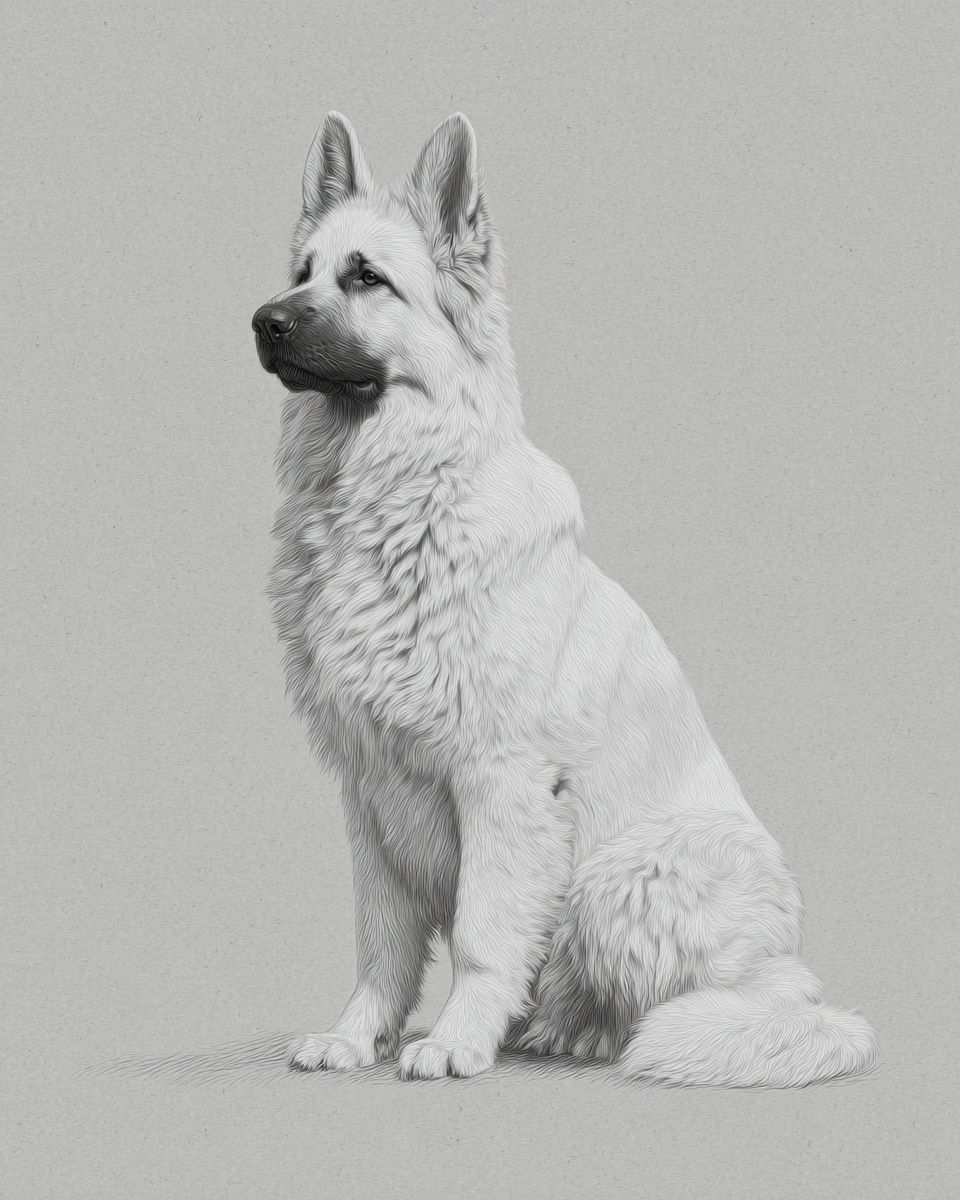German Shepherd

Description
German Shepherds originated in late 19th-century Germany, bred specifically for herding and guarding sheep. Captain Max von Stephanitz combined various regional herding dogs to create a breed focused on working ability rather than looks. Their agility, speed, and keen senses made them ideal for police and military roles worldwide. Today, they serve in diverse jobs including guide dogs, search-and-rescue, and detection work. This breed is confident and protective, often forming strong bonds with their families. They need consistent mental challenges and physical activity to stay balanced. Without proper training and socialization, they may develop unwanted behaviors. German Shepherds weigh between 50 and 90 pounds, with a medium double coat that comes in colors like black and tan, sable, white, and bi-color. Barking can be frequent, reflecting their alert nature.
Grooming
German Shepherds have a medium-length double coat that sheds heavily, especially during spring and fall. Regular brushing three times a week is essential to manage loose hair and prevent matting. Using an undercoat rake helps remove dead fur trapped beneath the topcoat. Bathing every 4 to 6 weeks keeps their coat clean without stripping natural oils; blow-drying afterward aids in removing loose undercoat hairs. Pay attention to seasonal shedding spikes by increasing grooming frequency to daily sessions if needed. Their coat colors, such as black and tan or sable, don't require special stain treatments but do benefit from routine cleaning to maintain vibrancy. Key grooming tips: - Brush 3× weekly, daily during heavy shedding - Use undercoat rake to remove dead fur - Bathe every 4–6 weeks, blow-dry thoroughly - Check ears and trim nails regularly Pro tip: De-shedding tools used every 4–6 weeks reduce loose hair around your home significantly.
Learn the Double routine:
→ Complete Double Grooming Guide
Walking
German Shepherds require about 100 minutes of walking daily, split into two sessions to keep them physically and mentally engaged. One walk should be a brisk 40-minute exercise focusing on endurance, while the other can be a 60-minute mixed session incorporating obedience drills or scent tracking to stimulate their sharp minds. A sample routine could be a morning 40-minute jog around the neighborhood followed by an evening 60-minute walk in a park with opportunities for controlled off-leash play and training exercises. This balance helps manage their natural alertness and reduces excessive barking. Consistent, varied walks prevent boredom and channel their protective instincts positively. Avoid long periods of inactivity, as this breed thrives on purposeful movement and mental challenges. Bottom line: Two daily walks totaling 100 minutes keep a German Shepherd fit, focused, and well-behaved.
Boarding
When boarding a German Shepherd, provide a crate at least 48 inches long to accommodate their size comfortably. They benefit from a routine that includes two active play sessions daily, combined with scent or brain games to engage their problem-solving skills. Staff should be aware that these dogs can be vocal and protective, so gradual acclimation to the boarding environment is crucial. Their playstyle is energetic but controlled; they enjoy fetch, tug, and interactive puzzle toys. Enrichment activities help reduce stress and prevent destructive behaviors during their stay. Supervisors should monitor interactions with other dogs closely, as German Shepherds may assert dominance without proper introductions. Offering a mix of physical exercise and mental stimulation keeps them calm and content. Quiet time in the crate after play helps them recharge. Bottom line: Spacious crates plus structured play and brain games ensure a German Shepherd’s boarding experience is positive and stress-free.